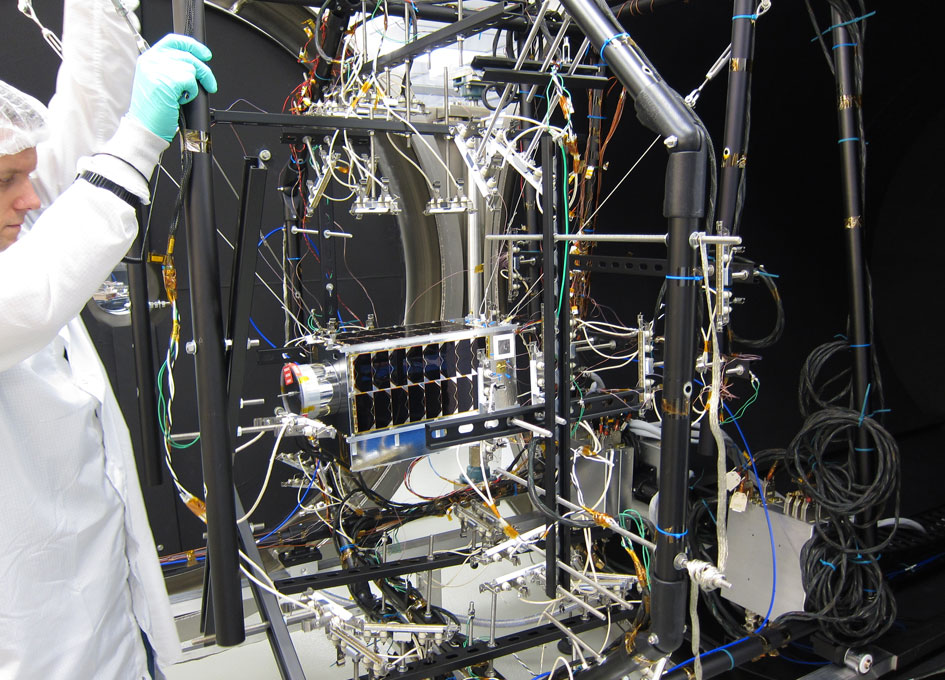At 11:57 p.m. EDT (8:57 a.m. Indian local time) the Indian Space Research Organisation (ISRO) PSLV-34 rocket with 20 satellites onboard flawlessly launched. It was a milestone mission for India as it continues to showcase its developing launch capability. Two Canadian small satellites, M3MSat and CLAIRE, were successfully launched as part of the secondary payload.
The primary payload for this missing was India’s Cartosat-2, a cartographic imaging satellite.
The secondary payloads also included 17 other small satellites including 12 Doves from Planet Labs based out of the U.S., a satellite for Terra Bella, SkySat Gen2-1, which is owned by Google, two Indian student CubeSats and 1 satellite each from Indonesia and Germany.
Watch a Replay of the Launch
Maritime Monitoring and Messaging Microsatellite (M3MSat)

Image credit: Canadian Space Agency/Honeywell.
From the Canadian Space Agency: “Canada’s Maritime Monitoring and Messaging Microsatellite (M3MSat) uses a new type of generic satellite platform design. Its main components include: S-band antenna; C-band antenna; Low Data Rate System (LDRS) antenna; Sun sensors; S-band antenna; Global Positioning System (GPS) antenna; Solar cells; Automatic Identification System (AIS) antenna; and Dielectric Deep Charge Monitor (DDCM).”
GHGSat CLAIRE

CLAIRE by GHGSat is outfitted with sensors that will enable it to measure greenhouse gas emissions from industrial facilities around the world. GHGSat’s mission is to become the global reference for remote sensing of greenhouse gas (GHG) and air quality gas (AQG) emissions from industrial sites, using satellite technology.
ISRO PSLV-34 Rocket launch Brochure
 SpaceQ Space news and analysis.
SpaceQ Space news and analysis.



